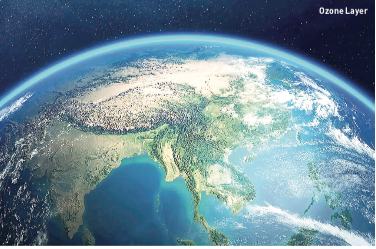App to help reduce UV related diseases
By Milliam.Murigi, August 31, 2022In an effort to reduce the global burden of skin cancer and UV-related eye damage, a consortium of United Nations (UN) agencies have innovated a mobile application that aims at reducing these numbers.
Dubbed SunSmart Global UV app, the application is providing localised information on ultraviolet (UV) radiation levels by highlighting time slots when sun protection is required. It targets to help people around the world to know exactly when to use sun protection.
“Evidence shows that overexposure to UV rays is the major cause of skin cancer. So, it’s vital for people to know when and how to protect themselves. We encourage everyone to use the application to protect themselves and their children, and to make this a daily habit. The app is providing five-days UV and weather forecasts at searchable locations,” said Dr Maria Neira, the director Department of Environment, Climate Change and Health at the World Health Organisation (WHO) during a recent Webinar.
Worrying numbers
Globally, it is estimated that over 1.5 million cases of skin cancer (melanoma and non-melanoma combined) were diagnosed in 2020. During the same period, more than 120,000 people across the world lost their lives to this highly preventable disease. One of the main factors contributing to these cancers is excess UV radiation from thinning of the earth’s stratospheric ozone layer resulting from the release of certain manmade chemicals.
Neira added that the app — which was launched in June this year by the WHO, World Meteorological Organisation (WMO), United Nations Environment Programme (Unep) and International Labour Organization (ILO) — is available for free on the Play Store for android and App Store for iOS. It is available in six languages including Chinese, English, French, Russian, Dutch and Spanish. It also allows the inclusion of national and local data streams and adaptation to multiple languages.
Excess UV radiation
Meg Seki is the Executive Secretary of Unep’s Ozone Secretariat. She said one of the main factors contributing to the aforementioned cancers is excess UV radiation from thinning of the earth’s stratospheric ozone layer resulting from the release of manmade chemicals. However, she added that under the international treaty known as the Montreal Protocol, all UN member states are phasing out the production and usage of the harmful substances according to a specific timetable.
As a result of these continuing efforts, the ozone level is projected to recover by mid-century. In the meantime, individuals need to be particularly cautious to protect themselves from receiving too much UV exposure, and this is where the app plays an important role.
“We know that everyone needs some sun, mainly for the production of vitamin D that helps to prevent the development of bone diseases such as rickets, osteomalacia and osteoporosis. Excessive UV exposure is a major cause of skin cancer and other UV-related diseases, so it’s imperative for everyone to remain vigilant and ensure they protect themselves adequately with hats and sunscreen,” said Seki.
On his side, WMO Secretary General Prof Petteri Tallas said by increasing the public’s awareness and helping to reduce the incidence of skin cancer, the UV app ultimately supports the achievement of the UN Sustainable Development Goal 3, which aims to ensure healthy lives and well being worldwide by 2030.
“This app combines meteorological, environmental and health expertise to help protect people from the sun both at work and in their leisure. It is unique because it uses data from country-level weather and UV measuring stations to provide accurate and location-specific UV Index readings. It is a great example of science serving society,” said Tallas.
The app’s UV Index describes the level of solar UV radiation at the earth’s surface. The index is reported on a scale of one (or Low) to 11 and higher (or Extreme). The higher the index value, the greater the potential for damage to the skin and eye, and the less time it takes for harm to occur.
“The maximum UV Index is at the solar noon when the sun is highest in the sky. Adapting outdoor activities and using sun protection are recommended when the UV Index is three or above. UV damage is cumulative and can be harmful when people are exposed for long periods even at low levels,” added Neira.
Prevention measures
Many UV-related illnesses and deaths can be avoided through a set of simple prevention measures such as limiting time in the midday sun, seeking shade when UV rays are most intense, wearing protective clothing, hats and sunglasses, and using a broad-spectrum sunscreen. The new app can help anyone, anywhere and anytime determine the safe amount of time to stay outdoors, soaking up the rays.
The SunSmart Global UV app was developed by the Cancer Council Victoria and the Australian Radiation Protection and Nuclear Safety Agency, both WHO collaborating centres in Australia where a similar app demonstrated improved UV protection public awareness when it was used to support a decades-long systematic public health campaign promoting sun-smart behaviour.
